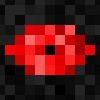Retro Gaming
-
Questor wrote:I ended up with a Boot dis for my GC to play imports too - was called Freeloader IIRC?
Aye. Have that for my Wii (and consequently GC due to its BC - which allows 480p mode on some imported GC games because I have the Wii hooked up via component).Holding the wrong end of the stick since 2009. -
The only console that I did heavily pirate was the SNES. By way of a Super Wild Card. Like a MegaCD, it went into the cartridge slot and sat on top of the console. It played games from floppy disk. Had about a hundred of them.poprock wrote:
Same here, but I don’t think that’s comparing like for like. Home computers (from ZX80 through Speccy and C64 right up to the ST, Amiga and PC) enjoyed a lot of piracy - they used tapes and discs. I think it’s more relevant to think of the PS1 in comparison to the older consoles - which were all cartridge based, and near-impossible to pirate at the time. In that context, the jump from carts to CDs … you can appreciate that the change boosted piracy.Was piracy really that much worse in the PS1 gen than in the days of floppy disks? It was actually the only gen where I didn't have pirate games, mainly because of the faff, perhaps also because pre-owned and trade ins were good value. Previously on the ST way more than half my game collection was pirated!
Still, not a trivial process. I think they sold them in games mags or, as in my case, the bloke at the car boot sale. -
Remember reading the Super Wild Card adverts in game magazines. Sounded like sorcery to me even though I was into computing by then.Holding the wrong end of the stick since 2009.
-
Aye - you had to be a bit of a geek to pirate carts. Whereas in the PS1 era you could pop down the local market and find a man selling hooky CDs by the boxload.
-
Was a crazy price too if I remember well - though given cartridge prices it wouldn't have taken long to pay for itself. How one got the images on disc back then is another matter of course.Holding the wrong end of the stick since 2009.
-
BBS were the main piracy distribution method in the early 90s
-
Questor wrote:BBS were the main piracy distribution method in the early 90s
I think school playgrounds were the real main distribution method. -
I mean they were definitely the larger secondary market
But I reckon for initial distribution, the BBS was king -
Was that device able to copy a cart onto disc as well? There was something called a UFO that did that? Maybe the Wild Card did that too?Holding the wrong end of the stick since 2009.
-
https://en.wikipedia.org/wiki/Game_backup_device
There was one for N64 too - that would have saved some mad money too.
And of course - any carts with special chips wouldn't have played.Holding the wrong end of the stick since 2009. -
Noticed an article in the FT-Weekend. Zoned in on museum style releases (Atari 50, Karateka and the new Jeff Minter collection).
Pointed out that it's a clever and important way forward of documenting older games , even ones that aren't that playable any more.Holding the wrong end of the stick since 2009. -
They were going for something like £300 in magazines. Can't remember what we paid but it would have been nowhere near that. Probably £150 max but that's a guess. I can't imagine my Dad authorising even that sort of outlay for some hooky electronics from a car boot.davyK wrote:Was a crazy price too if I remember well - though given cartridge prices it wouldn't have taken long to pay for itself. How one got the images on disc back then is another matter of course.
The process of transferring the cartridge was easy if you had an older brother who did it all. It was literally sticking a cartridge in the top, a blank floppy disk in the side and selecting the right option from the menus. But the rental shop didn't do SNES games so we hardly ever did that. The easiest method was buying them straight from Car Boot Man for £1 per game. Some Sundays were ridiculous with the games we came back with.
The real issue was Mode 7 which it, technically, couldn't do. Anything like Mario Kart was out. Basically didn't run. Or would crash almost instantly. Then there were games that used Mode 7 for like one level. It would either crash or get weird. But I've looked at the list of Mode 7 games since then and we definitely had some of them and ran them without issue. Maybe some of them had a CPU or GPU fallback mode but that doesn't sound very 1990s.
This guy runs through the basics of it.
-
The mind blower for me was a 32 in 1 gameboy cartridge found in a shop in Spain.
"Oh you can just put as many games as you like on these? And I'm usually getting charged £30 for one game just because."
Although the profit margin on the pirate cart was probably bigger than the official carts. -
I thought mode 7 was native.....games such as SMK and Pilotwings had accelerator chips in them (the DSP-1) - so maybe that was the reason.
Still a marvellous device ; especially for the time.Holding the wrong end of the stick since 2009. -
Show networks
- adrianongaming
- Xbox
- EvilRedEye8
- PSN
- EvilRedEye8
- Steam
- EvilRedEye8
Send messageThere’s like one game or something that uses native mode 7, the rest have a chip that helps the console a l’il bit as it can’t implement it very well on its own."ERE's like Mr. Muscle, he loves the things he hates" -
Show networks
- adrianongaming
- Xbox
- EvilRedEye8
- PSN
- EvilRedEye8
- Steam
- EvilRedEye8
Send messageWhat game’s that?"ERE's like Mr. Muscle, he loves the things he hates" -
EvilRedEye wrote:There’s like one game or something that uses native mode 7, the rest have a chip that helps the console a l’il bit as it can’t implement it very well on its own.
Yeah - the mode itself is native to the graphics chip but the console needs a co-processor chip to do some of the maths in certain games (e.g. Pilotwings, SMK) because of the main CPU slow clock speed - at least that's my understanding.Holding the wrong end of the stick since 2009. -
Moot_Geeza wrote:Red Zone on the Mega Drive

Pity the game was shit though.Holding the wrong end of the stick since 2009. -
Heh..... never played it !!!

Gunstar Heroes was an impressive tech display on Megadrive. It being a 68000 machine gave it a huge advantage really.Holding the wrong end of the stick since 2009. -
Return fire admittedly.
(A genuine good game, which Red Zone possibly isn't). -
Treasure were always able to squeeze hardware. It's why many games remained native.
I really wish they'd stop porting fucking Ikaruga though. Enough!Holding the wrong end of the stick since 2009. -
Yeah. One of the reasons why I found the performance of Bangai-O Spirits on DS so baffling. Obviously the game is supposed to slow down at key points, but surely not on a whim.
It's a shame they never added the XBLA Bangai-O game to the backwards compatible library. I only got to stage 3 at the time
-
If I was responsible for Ikaruga I'd dine out on it for decades too, tbh.
-
afgavinstan wrote:If I was responsible for Ikaruga I'd dine out on it for decades too, tbh.
Heh. Yeah - fair enough. I prefer Radiant Silvergun to it though.
Bangai O was a miracle on the N64 (though to be fair it did have 90+MHz clock speed which was tasty for the time) and it runs just as well as the Dreamcast port albeit with slightly less prettier backgrounds.Holding the wrong end of the stick since 2009. -
This makes sense. Maybe if you're running from a floppy disk, the console sometimes does enough of what it needs to so the game doesn't crash and I was just getting inferior graphics at certain points and not knowing. Then most other times, it just craps out entirely.davyK wrote:
Yeah - the mode itself is native to the graphics chip but the console needs a co-processor chip to do some of the maths in certain games (e.g. Pilotwings, SMK) because of the main CPU slow clock speed - at least that's my understanding.There’s like one game or something that uses native mode 7, the rest have a chip that helps the console a l’il bit as it can’t implement it very well on its own. -
The ROM file on the disc is likely read and placed into the Wild Card's RAM which is then accessed by the console in exactly the same way it accesses the ROM in a cartridge.
So the console would "miss" the coprocessor. since it isn't in the Wild Card, What would happen would depend on how the maths code is executed by the SNES
If the SNES architecture embeds the use of the DSP1 into normal calculations independent of the game code then the maths wouldn't get done in time and cause glitches (and possibly crash)
If the SNES code has to specifically call routines in the DSP1 then if it's missing the game would likely crash.Holding the wrong end of the stick since 2009. -
This was my limited understanding of it. It worked like tapes. There was a load up at the start, took about a minute usually. Then played just like a cart.davyK wrote:The ROM file on the disc is likely read and placed into the Wild Card's RAM which is then accessed by the console in exactly the same way it accesses the ROM in a cartridge. So the console would "miss" the coprocessor. since it isn't in the Wild Card, What would happen would depend on how the maths code is executed by the SNES If the SNES architecture embeds the use of the DSP1 into normal calculations independent of the game code then the maths wouldn't get done in time and cause glitches (and possibly crash) If the SNES code has to specifically call routines in the DSP1 then if it's missing the game would likely crash.
Howdy, Stranger!
It looks like you're new here. If you want to get involved, click one of these buttons!
Categories
- All Discussions2,715
- Games1,879
- Off topic836








